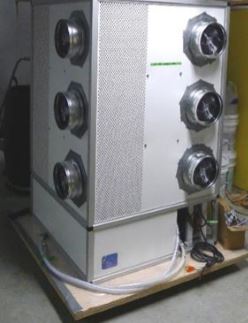Project Info
COMPLETE
 Project Title
Project Title
 Project Title
Project Title
Residential Applications of Dew Point Fluid Cooler
Project Number ET15SCE1300 Organization SCE End-use HVAC Sector Residential Project Year(s) 2016 - 2017Description
Run various simulations using a residential building model to determine water flow rates (from a fluid cooler) and air flow rates (from a residential air hander) required to meet cooling demand for single family residential home in climate zones in SCE territory. Design a condenser replacement strategy, including specifications for the Dew Point Fluid Cooler, air-to-water heat exchanger for air handler, and variable speed blower. Determine the thermal storage required to expand applicability of Dew Point cooler to climate zones for which loads are not met by the Dew Point Fluid Cooler. Thermal storage with nighttime cooling will lower the temperature of the water available. Determine rainwater storage required to meet 50% of the Dew Point cooler water needs, and whether or not typical annual rainfall would provide this water.
Project Report Document
Loading PDF Preview...
